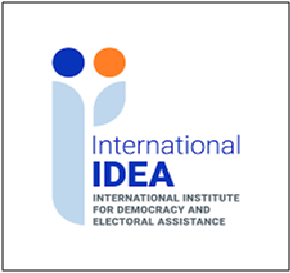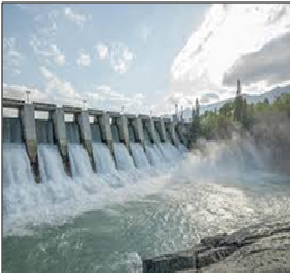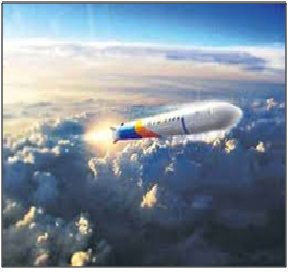- Home
- UPSC Mains
- Daily Free Initiatives
- Courses
- KPSC / KAS
- हिंदी
- Centres
- Contact Us
श्रेणी: राजनीति और शासन
परिप्रेक्ष्य:
भारत के मुख्य चुनाव आयुक्त (CEC) वर्ष 2026 के लिए अंतर्राष्ट्रीय लोकतंत्र और निर्वाचन सहायता संस्थान (International IDEA) के अध्यक्ष का पद संभालने वाले हैं।

अंतर्राष्ट्रीय IDEA के बारे में:
अंतर्राष्ट्रीय IDEA को संयुक्त राष्ट्र का प्रेक्षक (observer) दर्जा प्राप्त है।
संस्थान की शासन व्यवस्था में
मुख्य कार्य:
इसके कार्य करने के तरीके चार तत्वों पर आधारित हैं —
मुख्य कार्यक्षेत्र:
Source:
श्रेणी: इतिहास और संस्कृति
परिप्रेक्ष्य:
छत्तीसगढ़ 5वीं सदी के इस पुरातात्विक स्थल सिरपुर को यूनेस्को विश्व धरोहर सूची में शामिल कराने के लिए तैयारियों में लगा है।

सिरपुर पुरातात्विक स्थल के बारे में:
इसे Shripur और Sripura भी कहा जाता है।
इस स्थल की पहली खोज 1882 में ब्रिटिश इंजीनियर अलेक्जेंडर कनिंघम ने की थी, जो 1871 में ASI के पहले महानिदेशक बने।
1950 के दशक में खुदाई फिर शुरू हुई, तथा आगे 1990 के दशक और 2003 में भी जारी रही।
यह दक्षिण कोसल की संपन्न राजधानी थी, जहाँ पांडुवंशी और बाद में सोमवंशी राजाओं ने कला, वास्तुकला और धार्मिक शिक्षा को संरक्षण दिया।
यहाँ बड़े बौद्ध विहार, ध्यान स्थल और खुदाई से मिले स्तूप मौजूद हैं।
यहाँ 6वीं सदी का बाजार परिसर भी मिला है, जो इसे धार्मिक तथा व्यापारिक केंद्र दोनों सिद्ध करता है।
महानदी किनारे का यह पवित्र नदी-आधारित सांस्कृतिक परिदृश्य “प्रकृति और मानव के संयुक्त सृजन” की अवधारणा से मेल खाता है।
Source:
श्रेणी: पर्यावरण और पारिस्थितिकी

EHEP के बारे में:
2,70,000 से अधिक पेड़ों की कटाई
1,100 हेक्टेयर से अधिक वनभूमि का diversion
यहाँ मुख्य रूप से इडू-मिश्मी जनजाति रहती है।
Source:
श्रेणी: विज्ञान एवं प्रौद्योगिकी

Vikram-I के बारे में:
चरण:
कुल 4 चरण —
लक्ष्य:
छोटे उपग्रहों (small-sat) के लिए विशेष रूप से डिज़ाइन किया गया।
पेलोड क्षमता:
Source:
श्रेणी: सरकारी योजनाएँ

Tex-RAMPS के बारे में:
वस्त्र मंत्रालय, भारत सरकार।
भारत के वस्त्र एवं परिधान क्षेत्र को भविष्य-सुरक्षित (future-proof) बनाना— नवाचार, डेटा प्रणाली, क्षमता विकास और स्टार्ट-अप समर्थन के माध्यम से।
₹305 करोड़ — FY 2025-26 से FY 2030-31 तक।
मुख्य घटक:
अपेक्षित परिणाम:
Source:
(यूपीएससी जीएस पेपर III -- "भारतीय अर्थव्यवस्था; सरकारी बजट; समावेशी विकास; डेटा और सांख्यिकीय प्रणालियाँ")
संदर्भ (परिचय)
भारत के राष्ट्रीय खातों के लिए आईएमएफ का 'सी' ग्रेड, प्रमुख संकेतकों के लिए पुराने आधार वर्ष, और अनौपचारिक क्षेत्र के मापन में लगातार बने रहने वाली कमियाँ भारत की सांख्यिकीय संरचना में व्यवस्थिक कमजोरियों को उजागर करती हैं, जिससे मैक्रोइकॉनॉमिक विश्वसनीयता, नीतिगत सटीकता और वैश्विक विश्वसनीयता पर चिंताएँ बढ़ गई हैं।
मुख्य तर्क
चुनौतियाँ / आलोचनाएँ
आगे की राह
निष्कर्ष
तेजी से विविधतापूर्ण होती अर्थव्यवस्था को पुरानी सांख्यिकीय बुनियाद पर नहीं चलाया जा सकता। आईएमएफ की निम्न ग्रेडिंग एक समय पर अनुस्मारक है कि विश्वसनीय डेटा केवल तकनीकी बुनियादी ढाँचा नहीं है --- यह ठोस मौद्रिक नीति, कल्याणकारी लक्ष्यीकरण, निवेश योजना और भारत की वैश्विक आर्थिक प्रतिष्ठा के केंद्र में है। इस प्रकार, सांख्यिकीय प्रणालियों को मजबूत करना भारत के एक आधुनिक, उच्च-विकास वाली अर्थव्यवस्था में संक्रमण के लिए आवश्यक है।
मुख्य परीक्षा प्रश्न
प्र. आईएमएफ ने भारत के राष्ट्रीय खातों के आँकड़ों की ग्रेडिंग क्यों घटाई, और यह भारत की डेटा प्रणालियों में कमजोरियों के बारे में क्या दर्शाता है? आप कौन से सुधार सुझाएंगे? (250 शब्द)
स्रोत: द हिंदू
(यूपीएससी जीएस पेपर III — “पर्यावरण; संरक्षण; पर्यावरणीय प्रभाव आकलन; भूमि क्षरण”)
संदर्भ (परिचय)
अरावली श्रृंखला का हिस्सा केवल 100 मीटर से ऊपर की भू-आकृतियों को वर्गीकृत करने के पर्यावरण मंत्रालय के प्रस्ताव को सर्वोच्च न्यायालय की हालिया स्वीकृति ने राजस्थान में इसके संरक्षित क्षेत्र को लगभग 90% तक सिकोड़ने का जोखिम पैदा कर दिया है, जिससे खनन, पारिस्थितिक क्षय और नीतिगत असंगति पर गंभीर चिंताएँ बढ़ गई हैं।
मुख्य तर्क
चुनौतियाँ / आलोचनाएँ
आगे की राह
निष्कर्ष
भारत की सबसे पुरानी पर्वत प्रणाली को संकीर्ण परिभाषाओं के माध्यम से नहीं बचाया जा सकता है जो पारिस्थितिक स्थिरता पर निष्कर्षण हितों को प्राथमिकता देती हैं। अरावली के अतुलनीय पर्यावरणीय कार्यों को संरक्षित करने और उत्तरी भारत को बढ़ते मरुस्थलीकरण और प्रदूषण से बचाने के लिए एक समग्र, विज्ञान-आधारित संरक्षण ढांचा आवश्यक है।
मुख्य परीक्षा प्रश्न
प्र. “पर्यावरण मंत्रालय की अरावली की नई परिभाषा को सर्वोच्च न्यायालय की स्वीकृति के गंभीर पारिस्थितिक प्रभाव हैं।” परीक्षण कीजिए। (250 शब्द, 15 अंक)
स्रोत: इंडियन एक्सप्रेस
